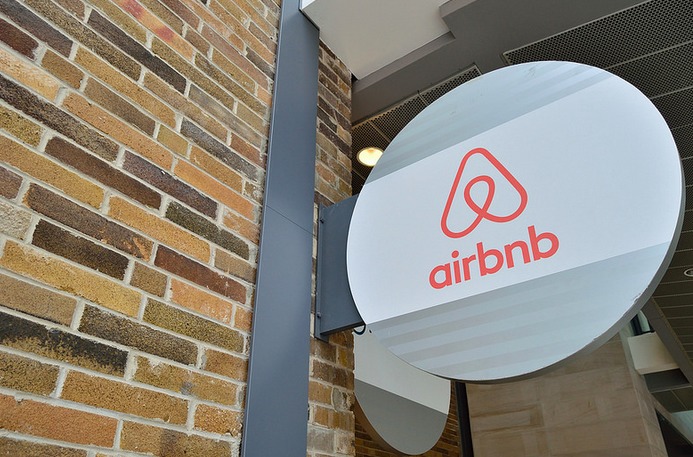I’ve been in the investments business for almost 25 years. Early in my career, I worked for investment banks that took companies public.
Later, I worked for mutual funds that participated (i.e., bought shares in) in newly public companies.
And, of course, as someone focused on technology, I’ve been witness to the good (Microsoft), the bad (Webvan) and the ugly (Facebook). In short, I know tech IPOs.

Lottery
And now, I believe the initial public offering (IPO) process is broken. An IPO used to be an orderly process to begin the transfer of ownership from private investors to public ones.
Now, in my opinion, IPOs seem to exist solely to provide a lottery-like payoff to various people. But other people are done wrong in this new paradigm.
Losers include the company itself, employees it will hire shortly after the IPO, and retail investors who mistakenly think the IPO process takes place on a level playing field.
Start-ups
Let’s frame the discussion: I’m talking about the initial public offerings of relatively small private technology companies that until the point of the IPO have typically been financed by venture capitalists and private equity firms.
We’re not talking about spin-offs (a la Hewlett Packard splitting in two) or sovereign entities like the Saudi Aramco oil company bringing in non-government investors. We’re also not talking about biotechnology firms that occupy a special niche of investing risk-reward.
In a typical tech company IPO, the burden of proof is on the venture capitalists (who generally have a low investment ‘batting average’) to prove that the company going public is capable of further growth and cash generation once in the hands of public investors like mutual funds and retail investors.
The latter, in my opinion, need to have a higher batting average because they rely less on one or two huge winners and more on steady, smaller investment returns.
Business Models
So the IPO process used to be about more than just raising another bucket of money and getting a cool ticker symbol. It was about the maturity of the business model. It was about management adding a new skill set – running a public company.
It was about employees learning about fiduciary duty. I used to think of the period immediately after that IPO as a time where, “we walk together.”
It was manifest by the nearly ironclad rule that no existing shares were sold in an IPO – the existing financiers (the insiders and the VCs) continued to own shares along with some new public owners.
Over the subsequent six to 12 months, insiders’ shares would unlock and be freely tradable, and the company and its bankers would likely mount a secondary offering, where the VCs could finally sell.
IPO Timing
The IPO pendulum swings back and forth. There were times when tech companies went public relatively early in their lives, sometimes even before they had recognized any revenue.
More recently, companies like Facebook (FB) and LinkedIn (LNKD) postponed their IPOs until much later – well after they were durably profitable.
But wherever companies were on this spectrum, the IPO event was largely for the benefit of the company.
Price-Driven
This has changed, in my opinion. Now, the IPO event is the tail that wags the dog. Instead of a focus on an orderly hand-off from private investors and a price that makes everyone “equally unhappy,” success has been redefined as how high IPO shares jump after trading begins.
The recent IPOs of Snap and MuleSoft offer fresh evidence. An article on CNBC.com the day after MuleSoft’s IPO opened with, “MuleSoft shares popped more than 45 percent in their trading debut, beating Snap for the best IPO first day gains this year.” As though that was a good thing.
And it was good for new MuleSoft owners, though if they were institutions that participated in the IPO, an unspoken code largely prevents them from selling. Reason: Investment bankers count on those given IPO allocations to refrain from selling those shares right back into the market in order to keep trading orderly and supply and demand predictable.
Retail Investors
Those institutions could sell if they really wanted to, but they would expect lesser or zero allocations of IPO shares from those same investment banks in the future.
Meanwhile retail investors would typically need to be high-net-worth individuals to score precious IPO shares. And if not, and they try picking up shares after the deal starts trading, be ready for a median one-year decline of 22.3%.
It’s also bad for the company itself, in my opinion, when an IPO pop means by definition the deal was mis-priced. It’s bad for employees hired shortly after an IPO, who often get stock options pegged to stock price that, as noted in the prior paragraph declines for some time putting those options deeply ‘under water.’
The Pop
Lastly, for non-IPO investors like my firm, a huge IPO price ‘pop’ makes the shares almost toxic because post the event, the lottery ticket value quickly evaporates, replaced – eventually – by the intrinsic value marked by the owner’s share of the cash flow – often non-existent.
Of course, everyone involved is a grown-up, and no laws are being broken. But it will take the companies themselves to demand a fix. Hint: in my view, that fix would probably involve an auction, like the one Alphabet (GOOG) used in its August 2004 IPO.
The bottom line is that a contemporary tech IPO is nothing more than a deeply cynical process, one that I think you would do best to avoid.
Photo Credit: Open Grid Scheduler via Flickr Creative Commons


